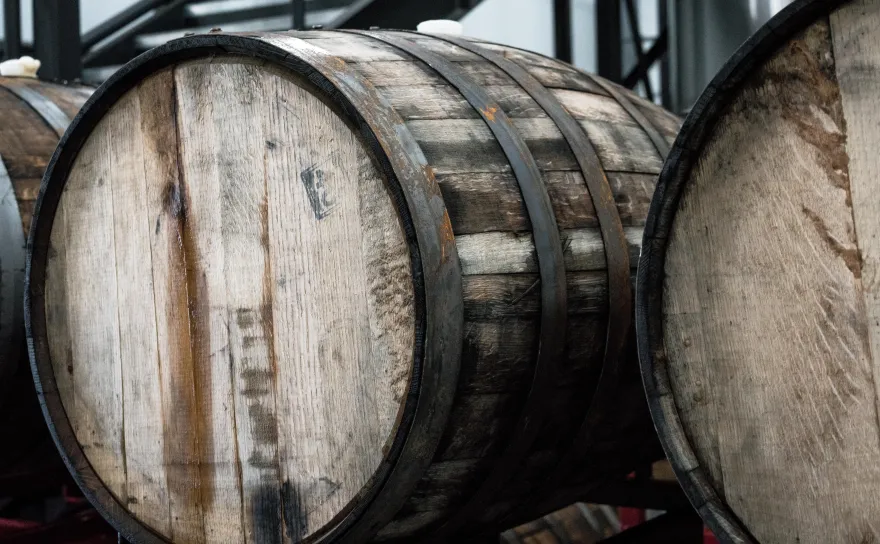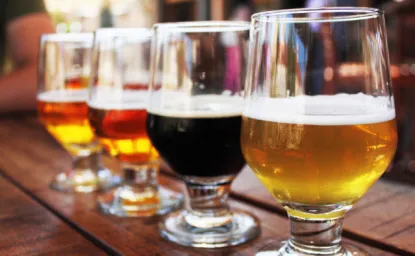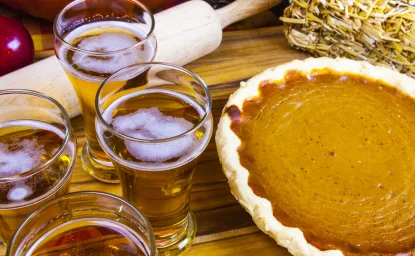
Barrel-aged beer. Seems like a straightforward enough concept. What about the process could possibly require further explanation?
Well, the effects of barrel aging are a bit more complex than they might seem. In fact, many of the unique flavor profiles of barrel-aged beers are directly attributable to this production style.
Plus, for all of you aspiring beer experts out there, it's essential to familiarize yourself with this process, if only so you don't confuse it with barrel fermenting, which is an entirely different ballgame altogether.
Why don't we start there, with the distinction between barrel aging and barrel fermentation? It's as good a spot as any to begin learning about this historic process.
Barrel aged vs. barrel fermented
What's the difference between these two processes, anyway? Let's dive in and explore to find out.
Barrel-aged beer
Barrel-aged beer is already fermented—it's just stored in this type of case to imbue it with a greater depth of flavor over time, or to iron out the heavy alcohol content that the beer accrued as a result of its fermentation.
The risk you run with barrel aging is in removing any subtlety from the beer's flavor profile, or in spoiling the brew entirely, since wooden barrels are highly permeable and are subject to invasions by microbes, both good and bad.
Barrel-fermented beer
Barrel-fermented beer, on the other hand, undergoes its unique process of fermentation within the wooden container itself. Beer-makers combine their yeast, wort, and other essential ingredients inside the barrel, resulting in an intensely unique, almost irreproducible brew with layers and layers of flavor.
Flavors attributable to barrel aging
Now that the distinguishing characteristics of barrel aging are clearer, we can dive headlong into what makes the whole endeavor worthwhile: namely, the warm, mellowed-out flavors that beers develop as a result of this process.
Plain old oak barrels are all well and good—since they're porous, as we mentioned previously, and aren't as good at maintaining a consistent temperature as, say, stainless steel containers, they're excellent at yielding "wild inoculations": those happy accidents that make a beer unforgettably delicious.
But a great number of barrel agers don't just utilize plain old oak barrels. They utilize old spirit barrels as well—containers that once housed bourbon, gin, and other liquors.
The "history" of flavors stored up in the walls of these containers leech out into the brew as it ages, adding layers of complexity and surprise to an otherwise straightforward recipe. Here are a few of the flavor profiles you can expect from barrels previously exposed to different types of liquor:
- Bourbon - Caramel, floral notes, vanilla
- Port - Chocolate, cherries
- Rum - Coconut, dark chocolate
- Sherry - Grape, earthy notes like oak
All this talk of beers and barrels got you foaming at the mouth, thirsty for a sample of what we've been describing? Here's a quick list of the barrel-aged brews we've got on tap, for your drinking enjoyment:
- Monday Night - Overnight Celebrity
- New Holland - Dragon's Milk
- North Coast Brewing Company - Old Rasputin
- Wicked Weed - Freak of Nature
Interested in trying one of these delectable brews? Go ahead—indulge yourself! And while you're at it, check out what else is on tap with us today.


